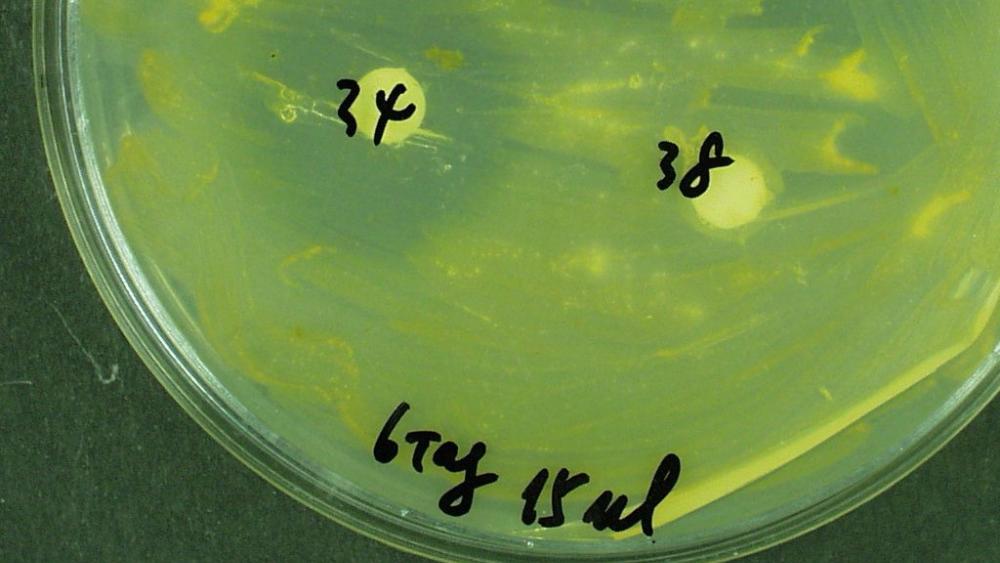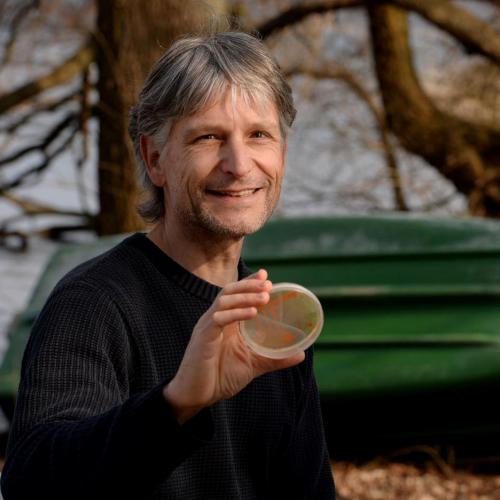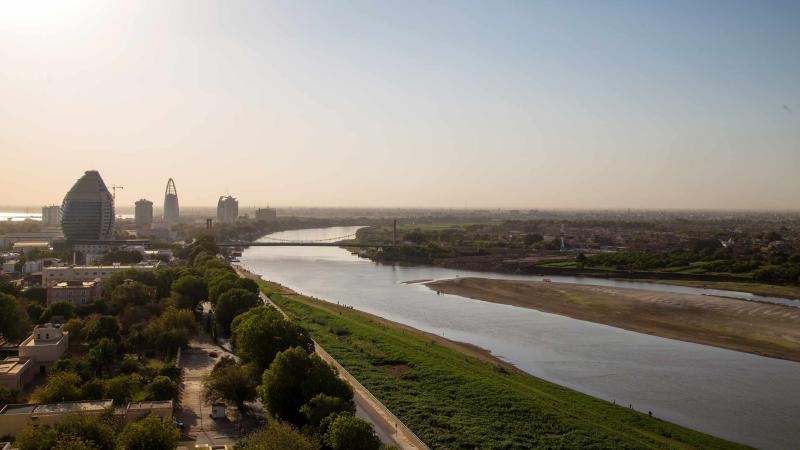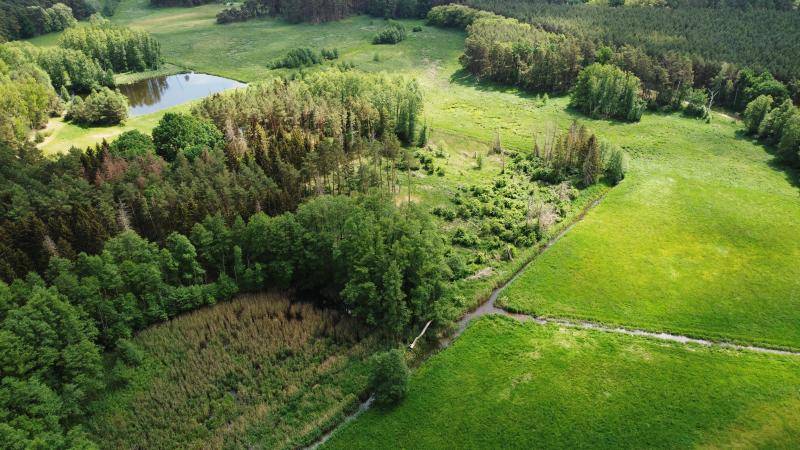
Bacterial colonies from a water sample. One antibiotic (No. 34) inhibits the growth of the bacteria, while they are resistant to another (No. 38). | Photo: Hans-Peter Grossart
The worldwide use of antimicrobial agents in medicine and agriculture promotes the emergence of germs that are resistant to drugs and lead to infections that are difficult or impossible to treat. Different conditions are decisive for the emergence of drug-resistant pathogens, the research and containment of which goes far beyond the actual field of biomedicine and requires an interdisciplinary approach.
The researchers assume that human impact on the environment accelerates the spread of pathogens. Therefore, the project is designed to comparatively investigate the conditions of natural, agriculturally used and urban areas – on land and in water bodies.
"Humanisation" of the microbiome in urban waters
Antibiotic-resistant germs and antibiotics enter the aquatic environment via sewage and manure. However, little is known about their subsequent fate. "Drug-resistant microorganisms are present in water bodies – even if we cannot see them or hardly detect them with our analyses. Our preliminary, random studies show that the aquatic microbiome seems to be 'humanised', especially in urban areas. That means we found a high number and diversity of antibiotic-resistant germs in the water and sediment of urban waters", explained IGB researcher Hans-Peter Grossart.
A risk map will show hotspots of resistant germs – from the source to the environment
As part of INFECTIONS’21, Hans-Peter Grossart and Alex Greenwood will collect water and sediment samples and sequence the microbial communities at selected study sites in water bodies on agricultural land, rural lakes, urban bathing lakes, urban wells and major sewage outfalls. This will allow the team to determine the diversity, distribution and quantity of antibiotic-resistant microorganisms from source to environment. The researchers will also investigate whether changes in microbial communities along the urban-rural gradient influence the spread of antibiotic resistance genes and how biotic and abiotic environmental influences contribute to their spread.
Based on the results, a risk map of antibiotic resistance in the aquatic environment will be created, identifying hotspots and pathways of spread. "Our research should ultimately help to reduce the occurrence of resistant germs in water bodies. Only if we make the invisible danger visible – by naming, localising and quantifying it – will actors in health and water management have the scientific basis to develop joint solution strategies", said Hans-Peter Grossart.





